
15-12-2025 07:09
 Danny Newman
Danny Newman
indet. Rutstroemiaceae sp. on unk. fallen leavesMc

15-12-2025 21:11
 Hardware Tony
Hardware Tony
Small clavate hairs, negative croziers and IKI bb

15-12-2025 15:54
 Johan Boonefaes
Johan Boonefaes
Unknown anamorph found on the ground in coastal sa

15-12-2025 15:48
 Danny Newman
Danny Newman
Melanospora cf. lagenaria on old, rotting, fallen

15-12-2025 07:05
 Danny Newman
Danny Newman
Pseudosclerococcum golindoi (det: Zotto)near Cosb

15-12-2025 11:49
 Danny Newman
Danny Newman
ITS sequences from the following two collections B

15-12-2025 12:34
 Danny Newman
Danny Newman
indet. Rhytismataceae on oak leafnear Purchase Roa

09-12-2025 12:06
 Andgelo Mombert
Andgelo Mombert
Bonjour,Je recherche l'article concernant Hypobryo
Encore un indéterminé de l'an dernier, d'une réserve dont je m'occupe (réserve naturelle de Wilbrote, région de Durbuy, Calestienne, prov. LX, B.). Sur tige morte de Hypericum perforatum, le 30.04.12. Non conservé, c'est pour avoir une idée.
Alors là, c'est un bituniqué je pense, mais hormis cela, je donne ma langue au chat!
Fentes -> 0.5 mm, s'ouvrant par déchirure, en groupes. Péridium olive, se déchirant, formant presque une apothécie. Hyménium incolore.
Asques 8-sporés, sp. unisériées ou irrégulièrement bisériées en quinconce. Pas d'appareil apical. Epaisseur x 9-10.5 µ. IKI négatif. Apparemment pas de hamatécium.
Spores hyalines, 1 à 3-septées, (15)17-20 x (4.8)5.5-7 µ. On observe souvent quelque chose que j'ai interprété comme des spores germées, à moins que cela ne soit des conidies (voir photo).
Une idée?
Amitiés - Luc BAILLY.?

I suppose you have what I tried to identify as "Tarbertia" (tentatively but probably wrongly placed in Durelloideae). But there is something quite similar which we identified as Exarmidium inclusum (Hyponectriaceae), which has more perithecioid ascomata.
Click here:
https://www.cubby.com/p/_778a6f3587954e008790666f822f8e4e/7a+Helotiales#7a%20Helotiales/Durella%20group/Tarbertia
https://www.cubby.com/p/_94bc7715309f400391e776656de1b46e/8g+Xylariomycetidae#8g%20Xylariomycetidae/Hyponectriaceae/Exarmidium
I remember we had already a thread on Exarmidium here.
Zotto

http://www.ascofrance.fr/search_forum/12420?
my collection "matched" E. cf. diaphanum.
Regards
Martin
The shape of the spores matches with Tarbertia sp. from Zotto's collections, but yours are too small to fit, so I reject this hypothesis (at least that species).
Martin, what you posted is very similar to what I found. I'll have to check the paper on Exarmidium tomorrow, because Cyberliber seems down atm. Then, I'll tell you if I find something. I wouldn't be that surprised to see a species growing on woody substrates on Hypericum, because Hyericum is quite lignified.
Thanks to both, and cheers - Luc BAILLY.

Zotto
That's a possibility the spores I have are too big due to being overmature: they're germinating.
By the way, I took my notes and I noticed when studying my samples there were sometimes 2 ascomas below the clypeus, witch is mentioned in the paper about Exarmidium (Martin just sent it to me). My sample fits quite well the description of Exarmidium diaphanum. Also, the general shape of the ascoma's fits way better with an Exarmidium.
So, for me, either it's Exarmidium diaphanum, or something very close.
Cheers - LUC.
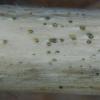
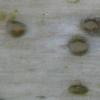
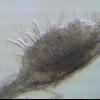
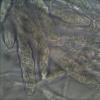
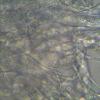
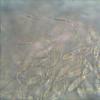
 Exarmidium-diaphanum-18VII2010-en-0001.pdf
Exarmidium-diaphanum-18VII2010-en-0001.pdf